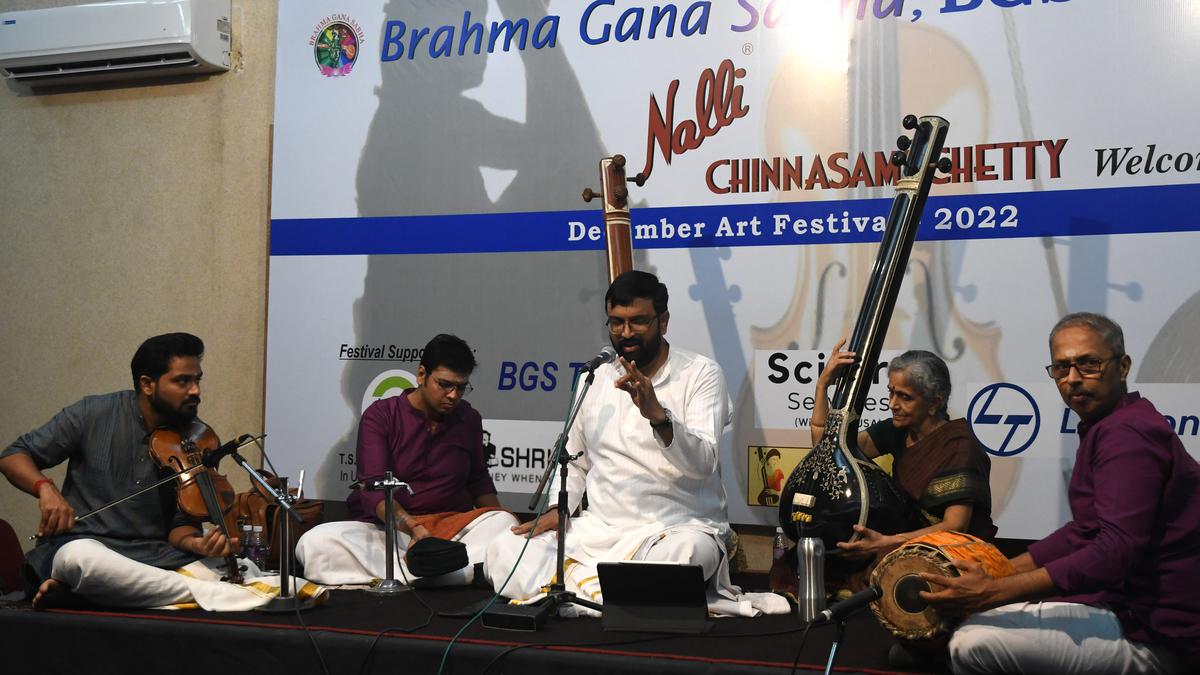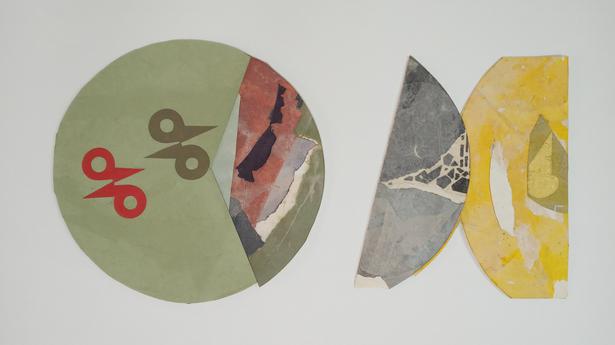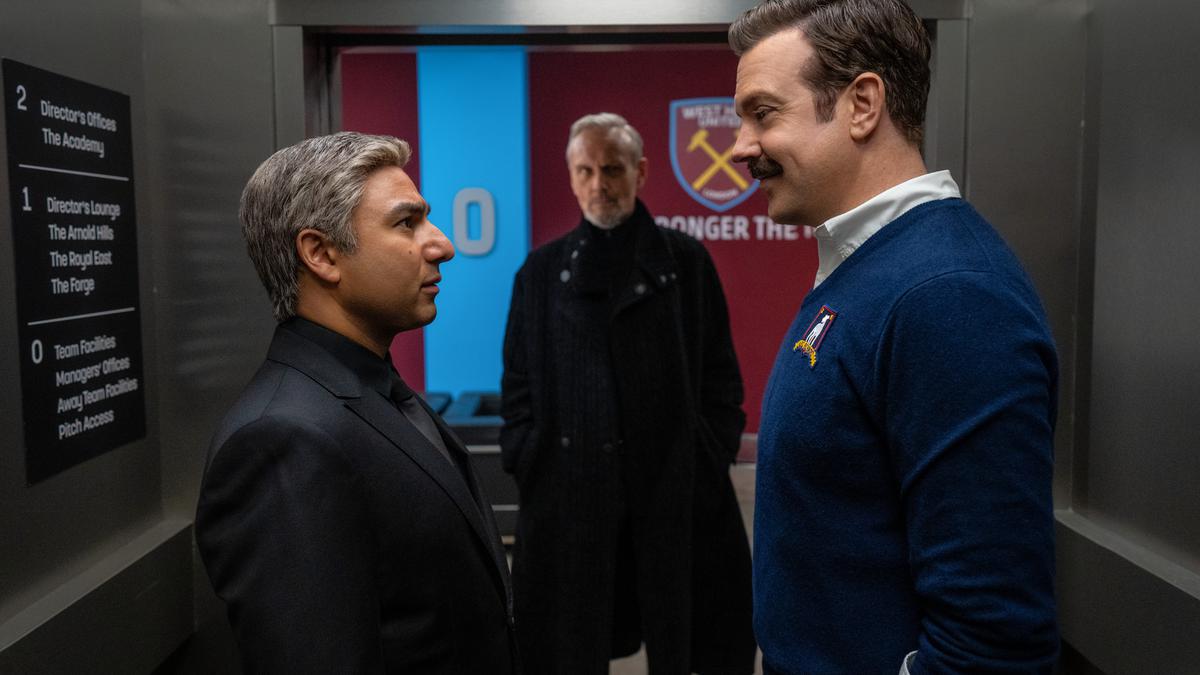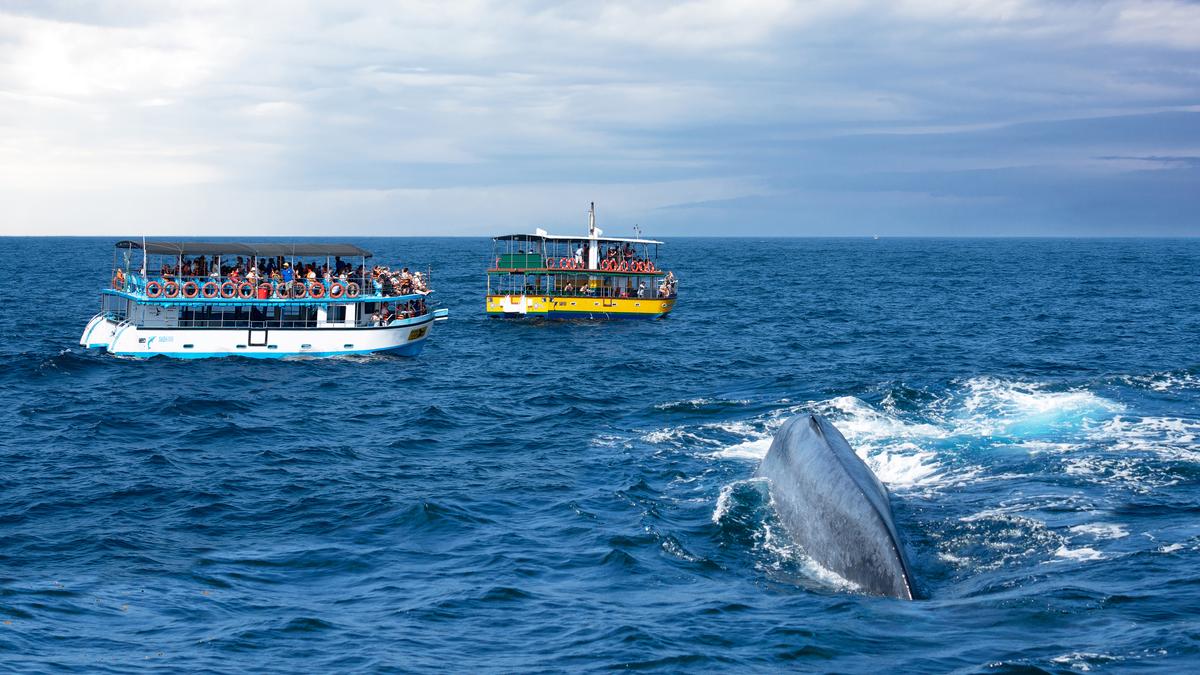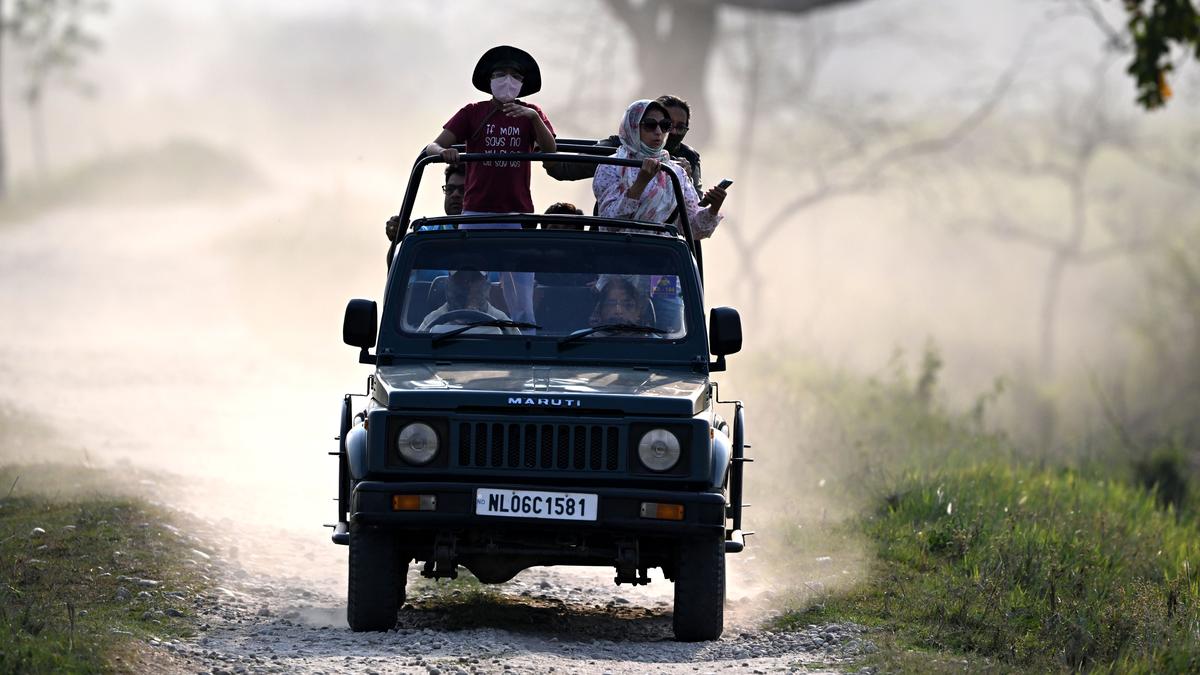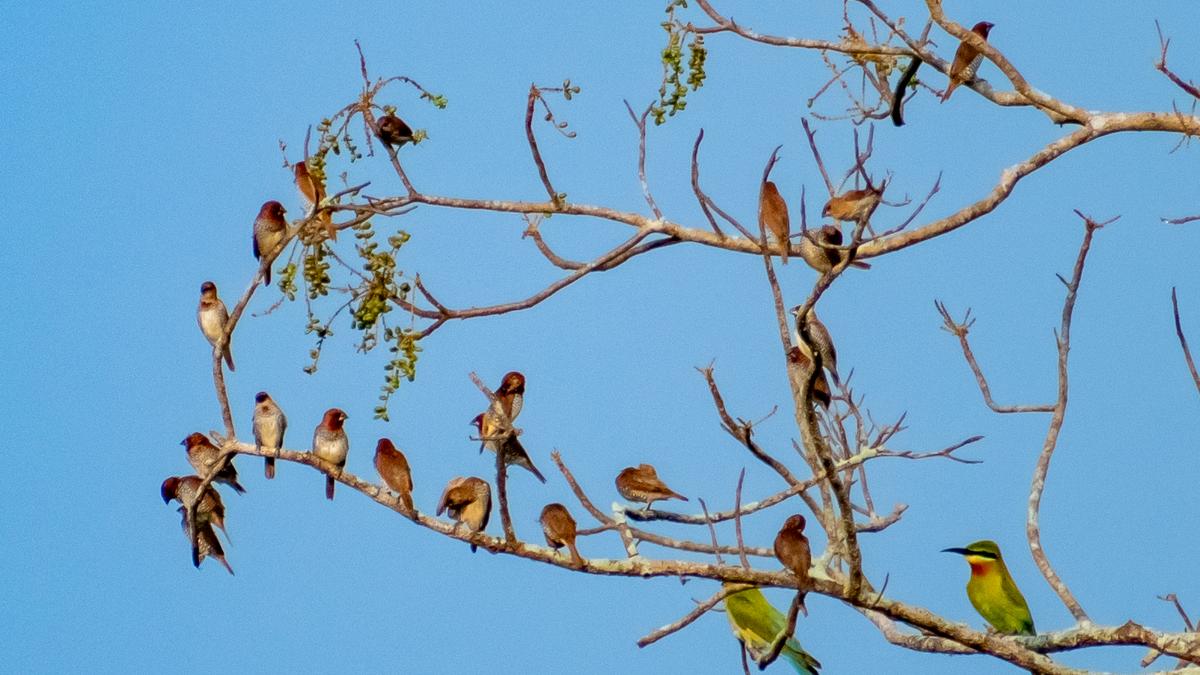G. Ravikiran with Arun Prakash, Anirudh Athreya and Madan Mohan
| Photo Credit: JOTHI RAMALINGAM B
G. Ravikiran’s mission at Brahma Gana Sabha seemed to augment his penchant for relaxed singing by providing a complete fare in a short duration. What he sacrificed in terms of vibrancy, he made good with authenticity and refinement.
‘Yochana kamala’ with some brisk swaras was possibly the only time Ravikiran got into an animated mood. The substantial kritis in Kannada and Thodi then dominated the concert, generally at an ambling pace.
In the Kannada alapana, Ravikiran was conventional, presenting characteristic phrases and blending flourish with smooth passages. Ragas like this enter a repetitive territory quickly, and both Ravikiran and violinist Madan Mohan stayed on course.
‘Sree mathrubhootham’ (Dikshitar) is almost the gold standard in Kannada, with a lilting Mishra Chapu edifice and a durita kala rounding it off.
Perfect kalapramanam
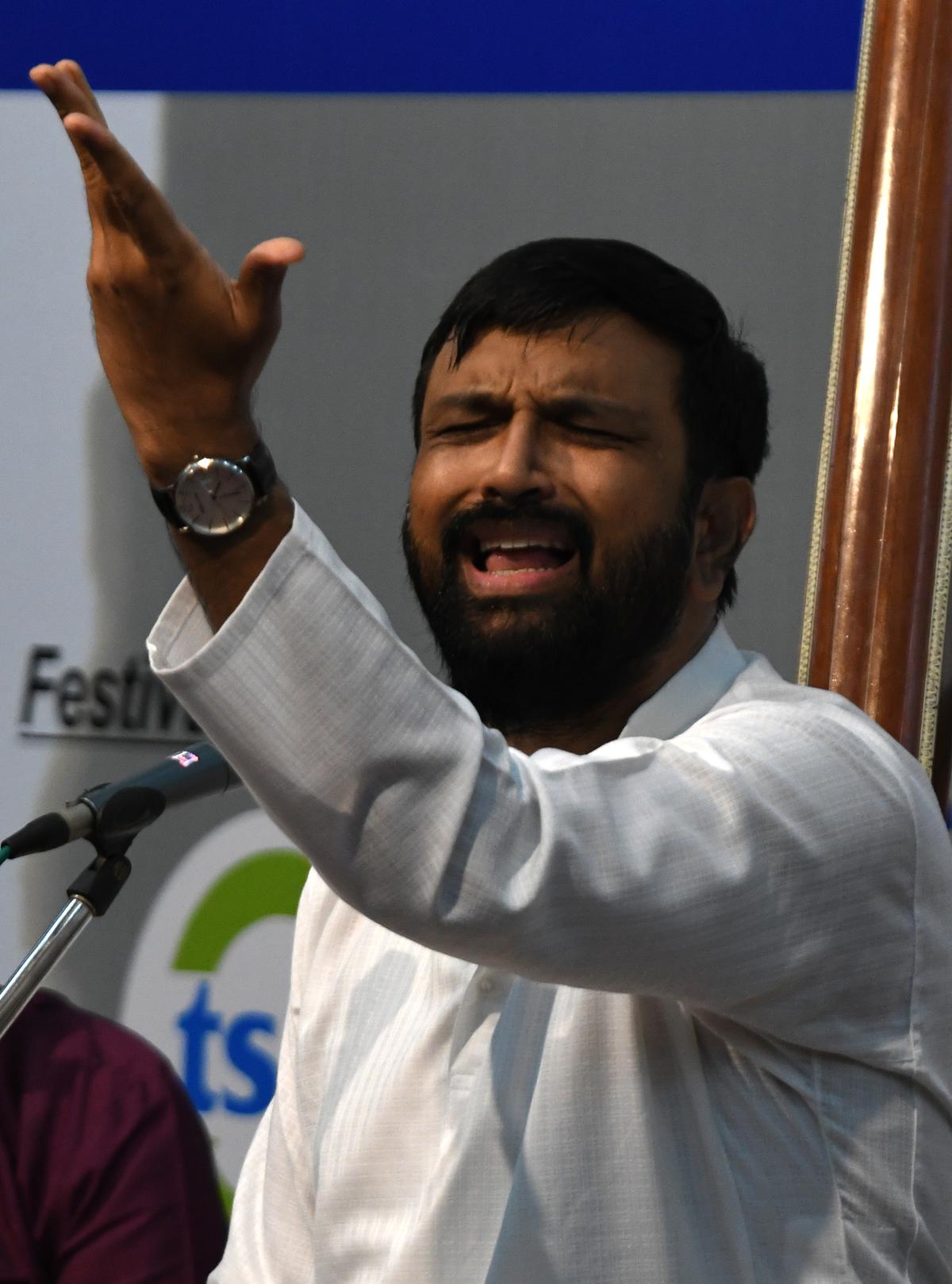
G. Ravikiran
| Photo Credit:
JOTHI RAMALINGAM B
Ravikiran presented the kriti in a perfect kalapramanam that allowed him to showcase his absorption of its special nuances. The swaras at ‘Suvasipushpa’ were lively. ‘Orajupu’ in Kannada Gowlai was perhaps meant as a speed breaker in the middle of the concert, but Ravikiran was too much in a reflective mode that he could not hasten it enough.
The Thodi raga alapana swung from bhava-filled phrases, especially in the ascent run, to some ‘standstill’ moments. Sangathis were crystal-clear in his alapana and in the kriti rendition. Madan Mohan’s alapana was equally aesthetic, soft and mellow, especially the permutations around the gandharam. Ravikiran chose the Syama Sastri swarajathi masterpiece, ‘Rave himagiri kumari kanchi kamakshi’. The progress was slow and the tala rested; the emphasis was on lucidity and good enunciation.
Should a concert slow down to allow a classical rendition of such masterpieces or should it motor along? The jury is out, especially when the concert is of a short duration. What Ravikiran did was to bring out the essence of the song. Ravikiran followed it up with a niraval at ‘Syama krishna nuthe’ and swara appendages. These additions are formulaic traditions, but an alapana of good measure and a longish kriti could have been left on that high.
The Ragamalika ‘Sancharadadhara sudha’, the popular Ashtapadi by Jayadeva and ‘Irakkam varamal’ (Gopalakrishna Bharathi, Behag) were the tail pieces, coated with the same poise and raga lakshana that painted the whole concert.
Ravikiran’s pitch-perfect and well-modulated voice lent him the ladder to reach the heights. The core principles of moving up the ranks are well stacked for him. Concert dynamism is a trick he will hopefully learn.
Violinist Madan Mohan was pleasing in the raga alapanas but preferred a subdued presence. Arun Prakash’s thani was artistic as was his playing to the vilamba pace of the swarajathi. Anirudh Athreya’s kanjira playing offered more than a fair share of percussive enjoyment.


